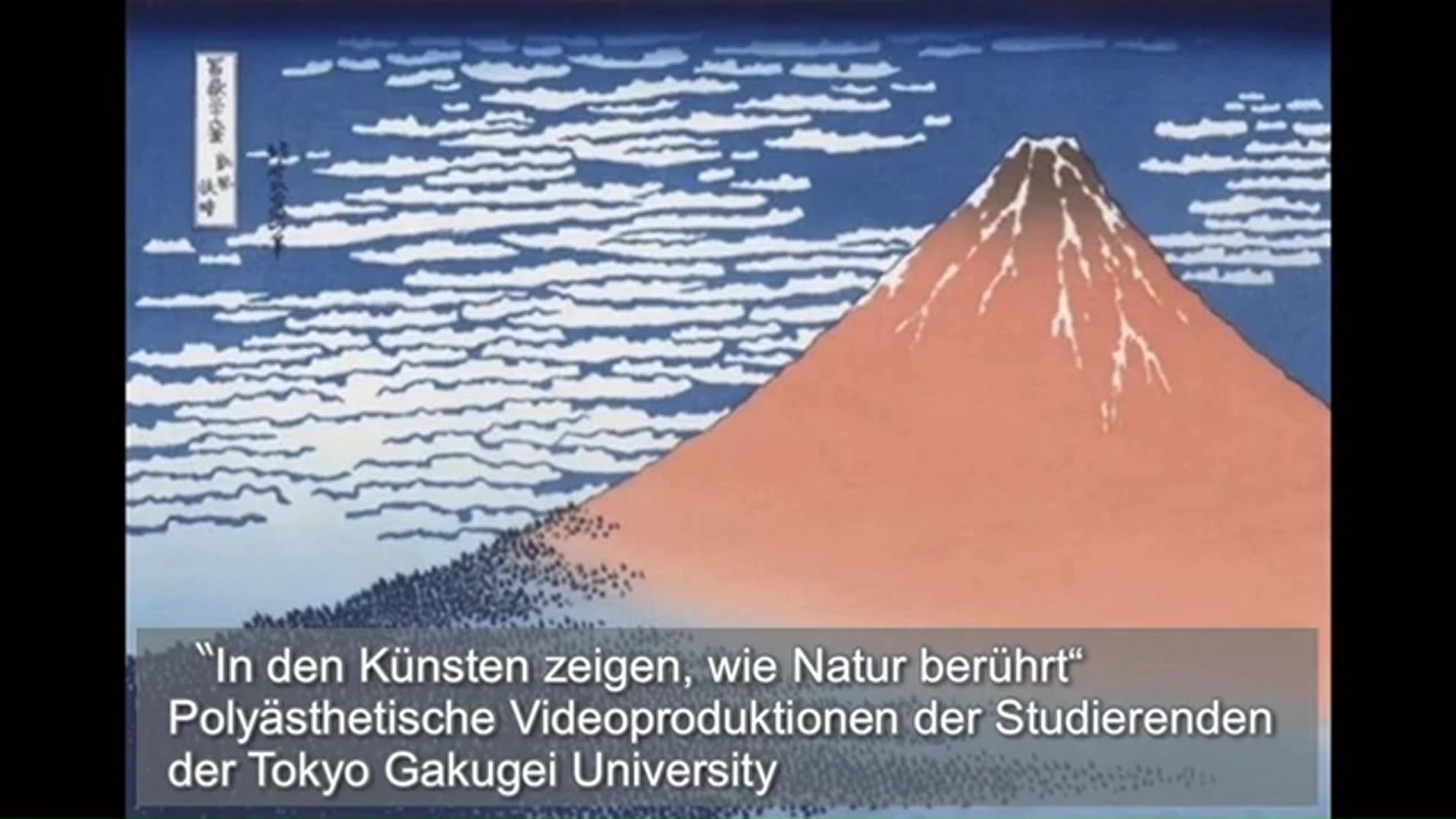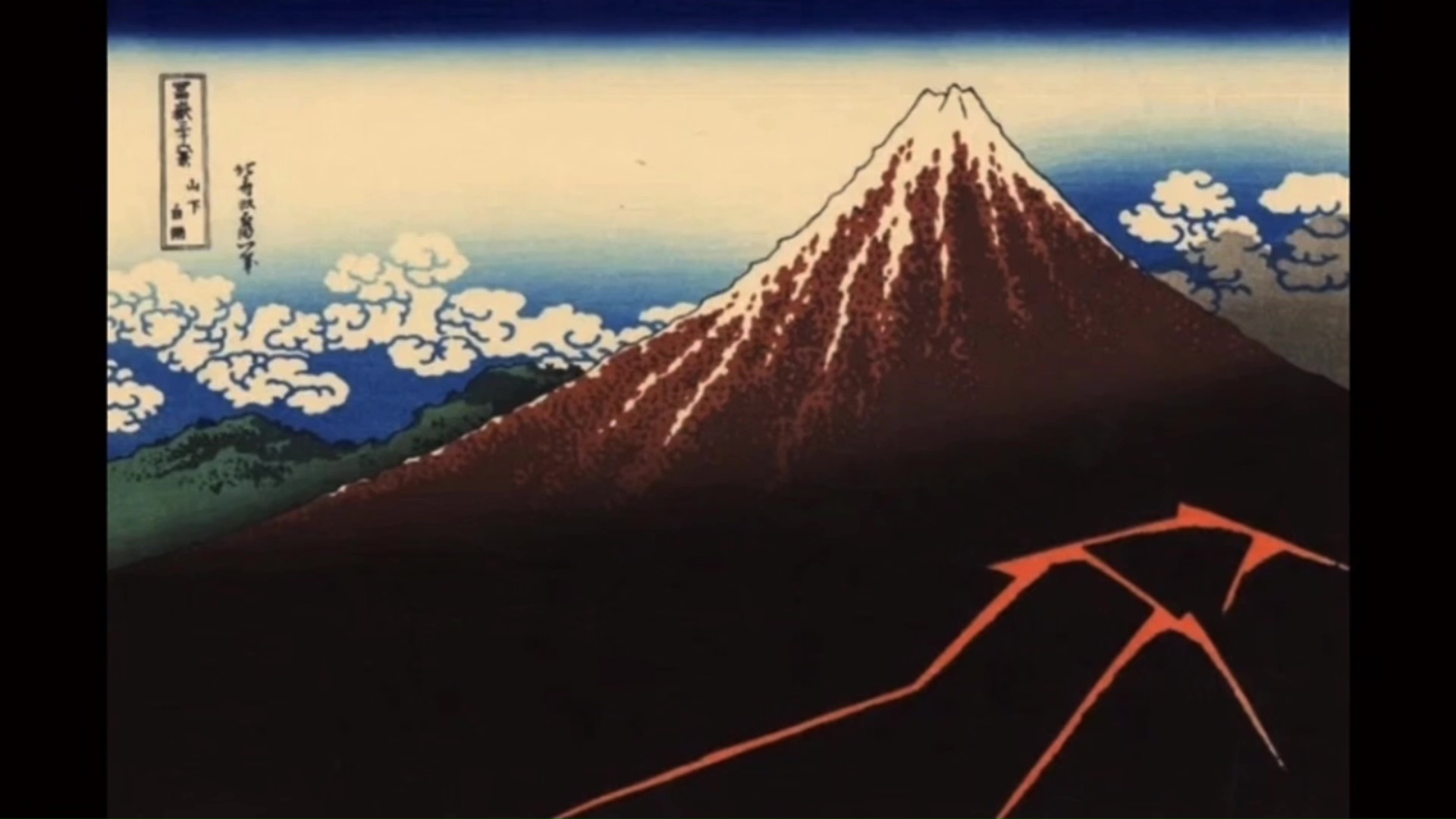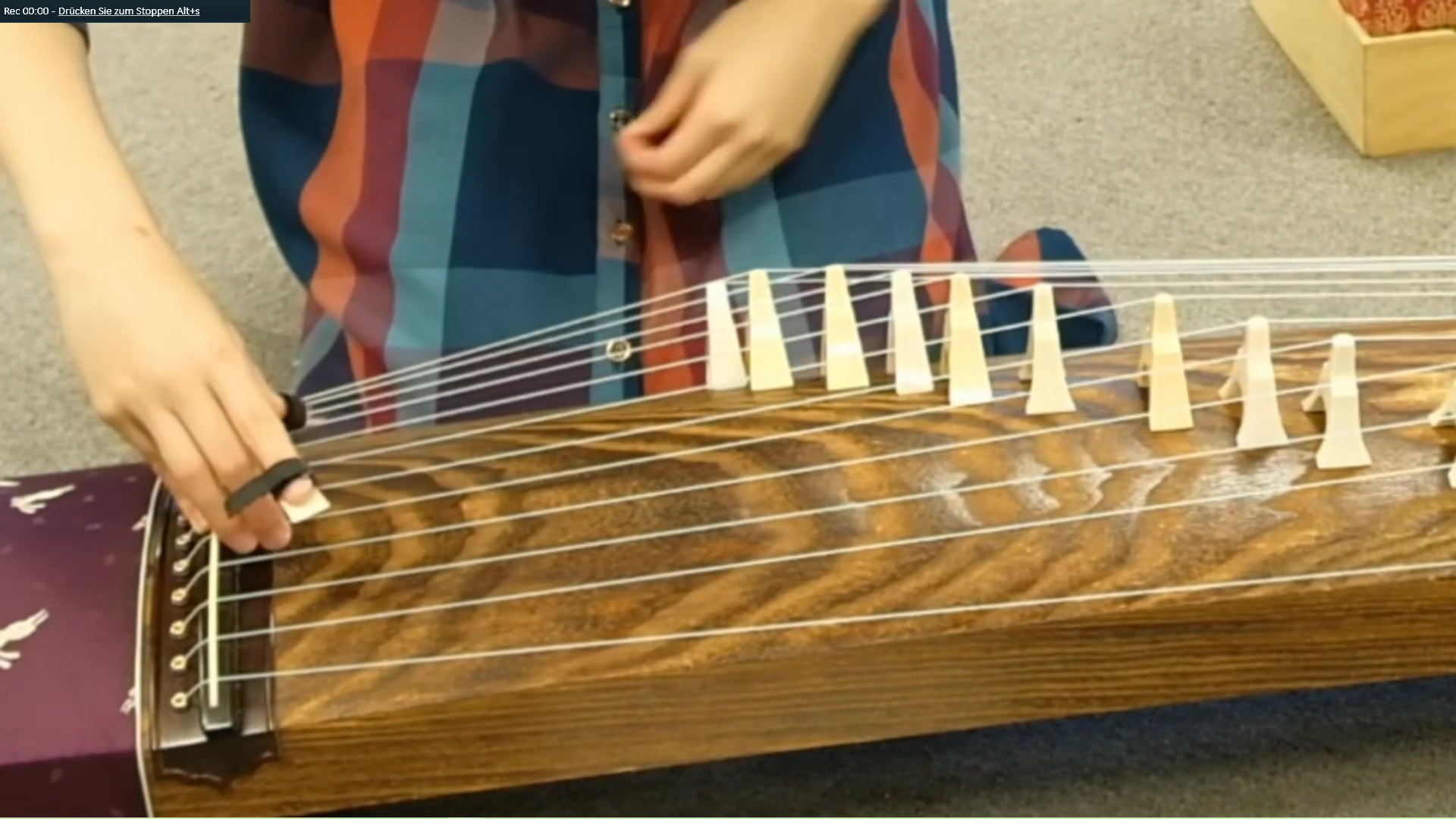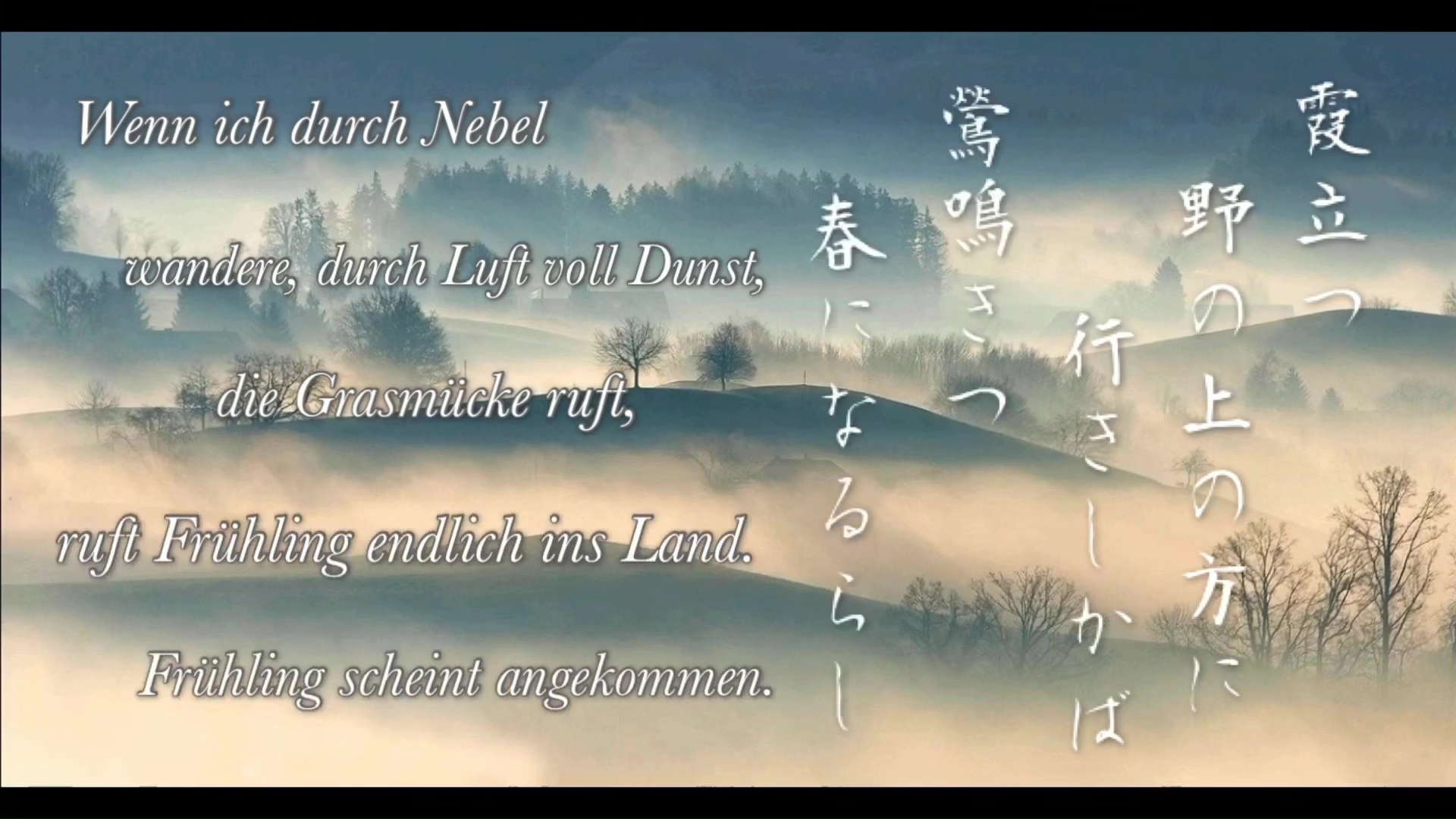In memoriam Alt-Rektor Univ. Prof. Reinhart v. Gutzeit
In ehrendem Gedenken! In the most honourable memory!
Am 11.7. d.J. verstarb der uns stets vorbildlich gewogene Alt-Rektor der Universität Mozarteum Salzburg.
2007 hatte er das große IGPE Symposium im neue errichteten Foyer am Mirabellplatz eröffnet. Viele weitere unserer Initiativen hat Univ. Prof. Reinhart v. Gutzeit als Rektor wesentlich gefördert. Sein Engagement für ästhetische Bildung im Sinne einer "conditio humana" war beispielgebend. Persönlich verdanke ich dem Alt-Rektor viele fachlich bereichernde Begegnungen. s.a. Univ. Mozarteum: In memoriam Reinhart von Gutzeit - Universität Mozarteum
We mourn the loss of Prof Dr Reinhart von Gutzeit, former Rector of the Mozarteum University Salzburg.
In 2007, he opened the major IGPE symposium in the newly built foyer on Mirabellplatz, Salzburg. Prof Reinhart v. Gutzeit was a significant supporter of many of our other initiatives as Rector. His engagement for aesthetic education in the sense of a ‘conditio humana’ was exemplary. Personally, I owe many professionally enriching encounters to the former rector.
See: In memoriam Reinhart von Gutzeit - Universität Mozarteum
Gerhard Hofbauer
Präs. IGPE, im Namen des Vorstands / on behalf of the board
Center for Applied Arts and Athletics Education (CAAAE) at Tokyo Gakugei University
The Center aims at redesigning school and social education, as well as promoting sustainable cultural activities utilizing the characteristics of arts and athletics. Employing the university’s human resources and facilities in these fields, the center will develop interdisciplinary curricula through industry-academia collaboration. The center will apply these achievements to teacher training programs including post certificate training and promote social education activities in partnership with local communities.
- Link to University https://www.u-gakugei.ac.jp/english/
Masayuki Nakaji, Februar 2025
The Children's Bridge

The project ‘The Children's Bridge’ as a musical-scenic play by Ukrainian children and a local primary school class is a clearly polyaesthetically staged and reflected example of aesthetic education with plenty of daily relevance.
Here you find the -> LINK to a 3 minutes' Video in German
Gerhard Hofbauer created a stage version based on the picture book story "The Children's Bridge" by Max Bolliger and Stepan Zavrel. The children are involved in a holistic creative process through music, dance, language and drama. The result was presented on April, 27 in Salzburg.
Please click for the review:
Workout 1 (Tokyo): Perform in the Arts how nature affects
WORKOUT 1 about "Perform in the arts how nature affects" guides you through the composition, improvisation and visualisation of students at Gakugei University in Tokyo, Japan. Enjoy this workout from the perspective of the Japanese young generation and feel free to send your impressions.
The medial products of the students of the Cologne University of Applied Sciences which are reflecting this Japanese workout you will find at WORKOUT 2, the analysis of the comments of WORKOUT 2 you find at WORKOUT 3.
"Perform in the arts how nature affects"
Three Polyaesthetic Videos of students of Tokyo Gakugei University, 2021
All concers of copyright and quoting are the responsibility of the authors.
Translation into German: Masayuki Nakaji and Gerhard Hofbauer.
German lyrics: Gerhard Hofbauer
 Using images and poems by Japanese artists as well as paintings by French painter Claude Monet, students of music education with Prof. Dr. Masayuki Nakaji musically reflected on the invitation to "Show in the arts how nature touches." They composed, improvised and played music and created three video films. With this they participate in the project to which "Polyesthetic Education International" [ www.paeb.org ] had invited cross-culturally. With students of the German University of Applied Sciences Cologne they share their experiences.
Using images and poems by Japanese artists as well as paintings by French painter Claude Monet, students of music education with Prof. Dr. Masayuki Nakaji musically reflected on the invitation to "Show in the arts how nature touches." They composed, improvised and played music and created three video films. With this they participate in the project to which "Polyesthetic Education International" [ www.paeb.org ] had invited cross-culturally. With students of the German University of Applied Sciences Cologne they share their experiences.
Product A (葛飾北斎の木版画による富嶽十六景)
Scenes of the Fuji-Yama after woodblock prints by Hokusai Katsushika / Szenen des Fuji-Yama nach Holzschnitten von Hokusai Katsushika
 Hokusai Katsushika (葛飾北斎 1760-1849) is one of the most famous Japanese woodblock artists. His works had significant influence on impressionist painters of Europe. Four students used European instruments to create musical scenes to 16 motifs of his woodblock series about Fuji-Yama, the sacred mountain of Japan.
Hokusai Katsushika (葛飾北斎 1760-1849) is one of the most famous Japanese woodblock artists. His works had significant influence on impressionist painters of Europe. Four students used European instruments to create musical scenes to 16 motifs of his woodblock series about Fuji-Yama, the sacred mountain of Japan.
Product B (クロード・モネ「睡蓮」への4つのオマージュ)
Hommage to Claude Monet and his paintings of „Nympheas“ – „Water Lilies“ / Hommage an Claude Monet zu Bildern der Serie „Nympheas“ – „Seerosen“
https://www.youtube.com/watch?v=sAUwn5VCO0k
 Claude Monet was influenced both by Hokusai and by Japanese woodcarving in general. There would be even more to add: Vincent van Gogh was also inspired, and a picture by Hokusai features the title page of Debussy's "La Mer". - The students composed four musical scenes using European tonality and had it interpreted by the traditional Japanese instrument “Koto 箏”. The mottos of the four movements are " Closeness - Freshness - Tranquility - Brilliant".
Claude Monet was influenced both by Hokusai and by Japanese woodcarving in general. There would be even more to add: Vincent van Gogh was also inspired, and a picture by Hokusai features the title page of Debussy's "La Mer". - The students composed four musical scenes using European tonality and had it interpreted by the traditional Japanese instrument “Koto 箏”. The mottos of the four movements are " Closeness - Freshness - Tranquility - Brilliant".
Product C (八つの短歌による四季の情景)
Four Seasons represented in eight Tankas / Vier Jahreszeiten in acht Tankas
https://youtube.com/watch?v=V2p1V9YkYq4&feature=share
 Tanka is a Japanese short poem of 5-7-5-7 syllables, much older than the 5-7-5 syllable haiku. The students selected eight tankas to represent the four seasons. They tankas date from the 7th, 8th and 10th century. The students composed the music vocally and instrumentally. They used traditional European and Japanese instruments as well as electronic instruments. The German text translation into the syllabic structure of the tanka was done by Gerhard Hofbauer according to the translation by Masayuki Nakaj.
Tanka is a Japanese short poem of 5-7-5-7 syllables, much older than the 5-7-5 syllable haiku. The students selected eight tankas to represent the four seasons. They tankas date from the 7th, 8th and 10th century. The students composed the music vocally and instrumentally. They used traditional European and Japanese instruments as well as electronic instruments. The German text translation into the syllabic structure of the tanka was done by Gerhard Hofbauer according to the translation by Masayuki Nakaj.
The authors of the poems (see below) and the dating of the anthologies:
| Authors | Dating of the anthologies | |
| 1) Tajihi no Mahito Otomaro (a) | (a) Manyohshuh (7-8 Jh.) | |
| 2) Ki no Tomonori (b) | (b) Kokin Waka Shuh (erste Hälfte 10. Jh.) | |
| 3) Ohtomo no Yakamochi (a) | (c) Gosen Waka Shuh (Mitte 10. Jh.) | |
| 4) Kiyohara no Hukayabu (b) | ||
| 5) Sarumaru Dayuh (b) | ||
| 6) Hunya no Asayasu (c) | ||
| 7) Minamoto no Muneyuki Shinnoh (b) | ||
| 8) anonym (a) |
|
1) |
|
2) |
|
Zieh’ ich durch Nebel |
|
Ein Tag im Frühling, |
|
wandere durch Luft voll Dunst, |
|
friedvoll scheint der Sonne Licht. |
|
ruft die Grasmücke, |
|
Kirschblüten ringsum |
|
ruft Frühling herbei ins Land. |
|
verstreuen sich so eilend |
|
Frühling scheint angekommen. |
|
weshalb in solcher Unruh? |
|
3) |
|
4) |
|
Immer im Zimmer |
|
Kurze Sommernacht, |
|
fortan verborgen, versteckt, |
|
schon tritt die Dämmerung ein. |
|
blockiert ist mein Herz. |
|
Wo in den Wolken |
|
Fort, geh hinaus und lausche. |
|
bist du, Mond? – Nicht konntest du |
|
Schon singen die Zikaden. |
|
des Westbergs Rand ergreifen? |
|
5) |
|
6) |
|
Hier, in den Bergen |
|
Wind auf dem Herbstfeld, |
|
sinkt mein Fuß Schritt um Schritt |
|
den weißen Tau auf Gräsern |
|
tief ins Bodenlaub |
|
hat er verblasen |
|
zarte Stimme eines Rehs |
|
wie lose Perlenkugeln |
|
traurig umfängt mich der Herbst |
|
in alle Richtung verstreut. |
|
7) |
|
8) |
|
Winter im Bergdorf |
|
Wickle ich den Schnee |
|
einsamer fühle ich mich |
|
sanft um die Pflaumenblüten |
|
als sonst unterm Jahr. |
|
heb‘ die Zweige an |
|
Niemand wird hierher kommen. |
|
zu zeigen was entstanden – |
|
Sterben sogar wird das Gras |
|
schmilzt sogleich das kalte Weiß. |
For messages to the youth authors, please use our contact form. We will do our best to forward them promptly.
Workout 2 (Cologne) "Perform in the arts how nature affects" International Online-Dialog
WORKOUT 2 is presenting the multi-medial productions of the students of the Cologne University of Applied Sciences who were reflecting creatively the Japanese videos, we published as WORKOUT 1.
A short summary of the analysis of the comments about WORKOUT 2 please see under WORKOUT 3 (Translation in progress).
In January, 2022, via a Webex conference, the working groups of the Cologne courses "Setting the scene for everyday life" and "Nature as a place of aesthetic education" presented their results. As design for the presentation the majority chose short videos, some preferred PowerPoint, partly as slide shows. Some groups recited texts or gave a commentary to the presentation.
Please feel free to watch the pdf and mp4 contributions as listed and linked below and to send your comments via the contact form. Information about the dialogue you will find -> below the matrix.
Contributions from: "Exercise in Aesthetic Education: Setting the scene for everyday life - polyaesthetics in social work".
|
title |
duration in minutes, approx.. |
click on Youtube or paeb-LINK below: |
|
Group 1: „Jahreszeitenwanderung“ / The Seasons‘ Walk |
|
|
|
Group 2: „Jahreszeitenempfindung in Japan und Deutschland“ / Feeling the Seasons in Japan and Germany |
1:37 |
|
|
Group 3: „Wandel der Zeiten“ / Time’s Changing |
0:40 |
|
|
Group 4: „Jahreszeitenreise“ / Seasonal Journey |
4:54 |
|
|
Group 5: „Puuuuuuur“ |
2:01 |
Contributions from: "Seminar on Aesthetic Education: Nature as a Space for Aesthetic Education"
|
title |
duration in minutes, approx.. |
click on Youtube or paeb-LINK below: |
|
Group 6: „Natur im Wandel“ Changing Nature |
1:37 |
|
|
Group 7: „Eine Reise des Lebens (damm, damm, damm)“ / A Journey of Life (damm, damm, damm) |
11:10 |
|
|
Group 8: „Die Natur wieder in den Alltag lassen“ / Re-integrating Nature into Everyday Life |
|
|
|
Group 9: „Die vier Elemente“ / The Four Elements |
2:38 |
|
|
Group 10: „Die fünf Jahreszeiten“ / The Five Seasons |
5 |
cannot be published because of copyright |
|
Group 11: „Wandelbare Schönheit“ / Transformable Beauty |
|
The international Online-Dialogue about the contributions
After each presentation, everyone participating in the event was asked to pause for five minutes and communicate a maximum of ten words via the communication platform chat about what they perceived. All students also wrote their feedback texts collectively in an email and submitted the result to the course instructor for anonymized evaluation. (For a short report about the analysis please follow WORKOUT 3.)
The dialogue event was prepared and organized by Prof. Dr. Dr. Dietmar Jürgens, Vice President of IGPE, Catholic University of Applied Science North Rhine-Westphalia, Cologne in cooperation with Mag. Gerhard Hofbauer, President of the International Society for Polyesthetic Education, Salzburg and Prof. Dr. Masayuki Nakaji, Gakugej University Tokyo and member of the board of IGPE.
The dialogue was concluded by a contribution of Prof. Dr. Anna Zembala, Member of the Expert Council of IGPE, about the intended projects for autumn 2022.
Timeline of „Showing through the Arts how Nature affects“
Milestones of the work in progress 2019-2022:
1) Dec. 2019: Conference of the international and interdisciplinary council of experts
2) Sept. 2020: symposium "Perform in the Arts, how Nature Affects"
3) Summer 2021: Video sequences by students of Gakugei University Tokyo.
5) Jan. 17, 2022: Virtual dialogue between Tokyo and Cologne, analysis
1) In December 2019, the international and interdisciplinary council of experts defines the motto "Perform in the Arts, how Nature Affects".
2) The international symposium "Perform in the Arts, how Nature Affects" discusses the basics of the topic; Experts of sciences and arts meet in Hohnhurst, Germany, others join via internet, in September 2020. (see: Events)
3) The students of Dr. Masayuki Nakaji at the Gakugei University Tokyo publish on the same topic in 2021 video sequences with their own compositions and texts. See Workout 1.
4) Dr. Dr. Dietmar Jürgens from the Kath. University of Applied Sciences Cologne introduces the students of his courses "Staging scenes of everyday life - Polyesthetics and social work" and "Nature as a field of aesthetic education" to the videos made by the Japanese students. Starting with the impulse to work independently with this task, they form small groups to reflect the Japanese workout. They create their aesthetic reflections following their perception independently. See Workout 2.
5) In a virtual dialogue between Tokyo and Cologne, the working outcome was presented, discussed and reflected together with guests from Polyaesthetic Education on January 17, 2022. Gerhard Hofbauer analyzed the feedback and the comments by quantity- and quality-content research. Please feel free to ask for more information. A short report see Workout 3.
An overall documentation is intended.
What Moves the Senses
Intercultural and international online-project, 2021/22, Universities of Cologne/Germany, Tokio/Japan
What Moves the Senses.
Resources of sensory experience in comparison.
Whether nature or the arts, both often touch people intensively and sustainably. Students and experts tried to investigate the hidden backgrounds of these aesthetic touches. Experience and acting out, perception and expression are the complementary components of Polyaesthetics.
Global Warming / Individual Freezing? (en)
Gerhard Hofbauer
Global Warming / Individual Freezing?
With the song "Nur Noch Kurz Die Welt Retten"[1], Tim Bendzko has delivered a slogan that can be interpreted in many ways. He himself promises after having saved the world he would return to his love-mate again. However, if mankind is an integral part of the world, it might be lucky to be saved by this hero. Otherwise?
„Performing in the arts how nature affects “, the current topic of Polyaesthetic Bildung International is leading the relationship of the individual to all that concerns nature to a crucial point, to a pivot: A revitalised awareness of everything that concerns nature in the broadest sense is intended to help people reposition themselves in their world.
There is no doubt about the urgency of averting global overheating, however and wherever opportunities arise. - But isn't individual coldness spreading wherever we look? Has not physical distancing already demonstrably led to a trend towards 'social distancing'?
No doubt, everything that distances the hostile virus has primary rank, so that "I can't breathe" does not become a heinous reality.
Let us leave the horror vision and its metaphors, but without running away from it all. For complementary counter-programmes are an imperative of the hour. Making the human psyche visible, audible, tangible in its psychophysical correspondence, simply put, its manifold system of reference to all nature on and around us, is the essence of our approach. To demonstrate and communicate through creative, artistic expression how - in what way and in what respect - nature touches us is the program[2].
From the sensual experience of how the world affects us, clear-headedness[3] can emerge. Focusing on how to be affected and reflecting on its aesthetical effects without predetermined purpose and utility[4], ‘eo ipso’ may create space, let us breathe more freely, may enable us better awareness and deeper feeling of the self[5].
Especially in urban areas, experience of nature has been noticeably tipped out of the overall experience of the world, but also beyond that, in all settings where other priorities take over the educational canon. We urge aesthetic educational processes back into context and hope you will stand with us.
The-> IGPE PUBLIC FORUM at htpps://paeb.org is open for your comments and contributions.
[1] See the Youtube-Video Tim Bendzko - Nur Noch Kurz Die Welt Retten (Offizielles Video) - YouTube (1.5.2021).
[2] Wolfgang Seierl, composer, painter and musician from Vienna, member of IGPE, made a 1 metre long string into a comprehensive artistic impulse on the issue of 'closeness and distance'. His works were presented at the Symposium 2020. For more details see the report of the symposium at https://paeb.org.
[3] Johann Gottfried Herder has described this aesthetic process in detail: Herder, Johann Gottfried von; Heintel, Erich (Hg.): Sprachphilosophische Schriften. 2. Aufl. Hamburg: Meiner, 1975 (Philosophische Bibliothek 248)
[4] Without going into detail, that kind of request can be found in Friedrich Schiller's Letters on Aesthetic Education: Schiller, Friedrich; Berghahn, Klaus L.: Über die ästhetische Erziehung des Menschen in einer Reihe von Briefen. Stuttgart: Reclam, 2000 (Universal-Bibliothek 18062)
[5] As incomparable as the time of origin of both sources of reference may be with the present pandemic situation, both approaches signify concrete aesthetical counter-programmes to the perceived psychic suffering of their time. While Herder criticises the human distance of rationalism, Schiller expresses his harsh disappointment about the French Revolution being able to lead to a 'better man' and trusts on the aesthetic education of the individuum. - Different signs of those times with similar effects as in the present?
Polyaesthetics and the theory of Expressive Arts
In July, 2021, the European Graduate School Saas-Fee, Switzerland, invited Gerhard Hofbauer to give a lecture at the sommerschool. The main topic was the anchoring of polyaesthetics in the theory of "Expressive Arts" according to Paolo Knill. Similarities in the development of both concepts were explored, examples of polyaesthetic projects were presented and discussed shortly. Participants from all continents followed interactively.
The video-recording is accassible on youtube: -> Link to the Video .



